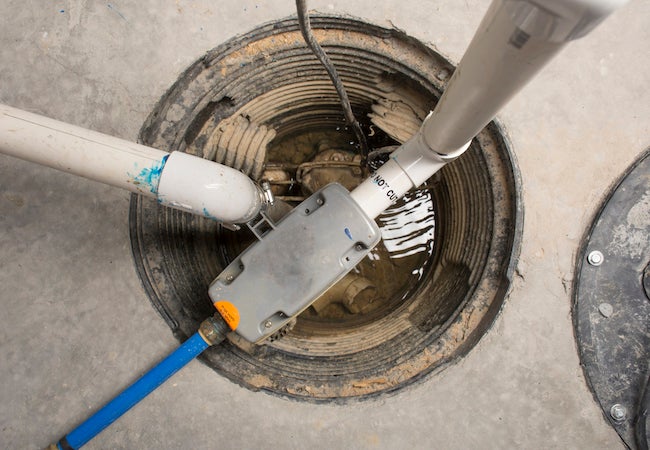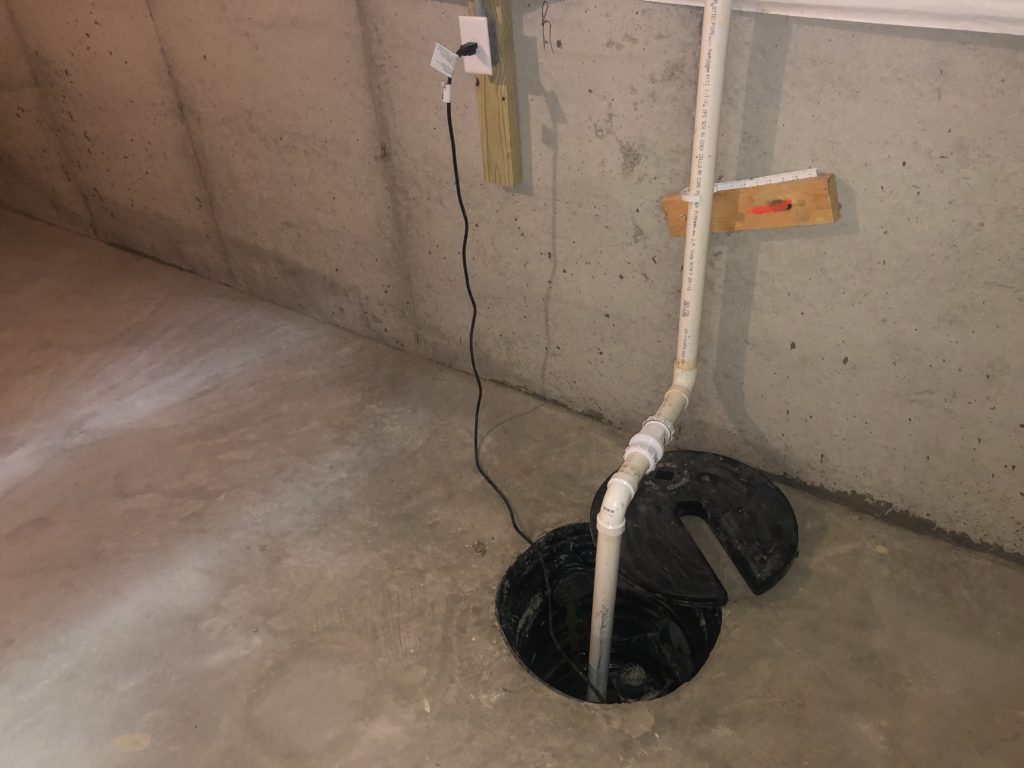The article down the page relating to How to Care for Your Sump Pump is incredibly entertaining. You should investigate for yourself.

Sump pumps are vital parts in lots of homes, specifically in locations susceptible to flooding or extreme wetness. They aid stop water damages by effectively removing excess water from cellars or crawl spaces. However, like any other appliance, sump pumps need regular upkeep to ensure they work properly when needed the most. Cleaning your sump pump is a crucial part of its upkeep, and comprehending just how to do it properly can save you from costly repair services and prospective catastrophes.
Intro
Maintaining a clean sump pump is vital for its proper performance and durability. Disregarding this essential task can cause obstructions, breakdowns, and inevitably, water damage to your property. As a result, finding out just how to cleanse a sump pump is vital for house owners who rely upon these devices to keep their basements dry and safeguarded.
Indications of a Dirty Sump Pump
Knowing when your sump pump needs cleansing is critical for avoiding prospective malfunctions. Some typical indications that indicate an unclean sump pump include weird noises throughout procedure, lowered water flow, and visible debris in the pit. If you notice any one of these signs and symptoms, it's necessary to cleanse your sump pump without delay to avoid any type of additional concerns.
Planning for Cleansing
Prior to you begin cleaning your sump pump, it's essential to take some safety and security preventative measures. Start by turning off the power to the pump to stay clear of any type of electrical crashes. Furthermore, put on proper safety equipment, such as handwear covers and goggles, to protect on your own from dirt, debris, and prospective microorganisms.
Recognizing the Sump Pump
Before diving into the cleansing procedure, it's important to have a basic understanding of how a sump pump functions. Commonly set up in a pit or basin below the basement flooring, a sump pump contains several crucial components, consisting of a pump, a float switch, and a discharge pipe. When water gathers in the pit, the float switch turns on the pump, which then pumps the water out with the discharge pipeline, away from the structure's foundation.
Detailed Overview to Cleaning a Sump Pump
Shutting down the Power
Begin by separating the power supply to the sump pump to avoid any type of crashes while cleansing.
Looking For Proper Functioning
Before re-installing the pump, perform a fast examination to make sure that the float switch triggers the pump properly. Put some water into the sump pit and observe the pump's operation. If every little thing is working correctly, you can reconstruct the pump and reconnect the power supply.
Eliminating Particles and Dirt
Utilize a pail or a scoop to eliminate any kind of visible debris, dust, or debris from the sump pit. Dispose of the debris correctly to prevent it from obstructing the pump or the discharge pipeline.
Cleaning the Pump and Drift Change
As soon as the pit is free from debris, thoroughly remove the pump from the pit. Check the pump and the float button for any indications of damages or wear. Utilize a soft brush or fabric to clean up the surfaces and eliminate any built up gunk.
Purging the System
After cleaning the pump and float switch, flush the sump pit with tidy water to get rid of any kind of staying dirt or sediment. This will aid make certain that the pump operates efficiently and successfully.
Maintenance Tips to Keep Your Sump Pump Clean
In addition to routine cleaning, there are several maintenance ideas you can comply with to keep your sump pump in optimum condition:
Conclusion
Cleaning your sump pump is a vital aspect of its maintenance and makes certain that it operates effectively when you require it one of the most. By following the steps detailed in this overview and including regular upkeep into your routine, you can extend the life expectancy of your sump pump and secure your home from water damages.
6 STEPS ON HOW TO CLEAN A SUMP PUMP PROPERLY
UNDERSTANDING SUMP PUMPS
Your sump pump plays a crucial role in protecting your home by managing and removing excess water. It primarily functions as a “shield”, guarding your basement against the damaging effects of water accumulation. The pump is housed in a sump pit in the lowest part of your basement, and its job is to pump out any water that collects there.
During heavy rainfalls or when snow melts rapidly, water can infiltrate your basement, posing potential risks like flooding, structural damage, and harmful mold growth. Here, the sump pump springs into action, pumping out the intruding water and directing it away from your home.
SAFETY FIRST
Before cleaning, remember to prioritize safety. Disconnect the sump pump from the power source to prevent any accidental electric shocks. Also, wear sturdy gloves to protect your hands from any sharp or dirty components within the pump.
REMOVE THE SUMP PUMP
After ensuring your safety, the next step is to remove the sump pump from its pit. Doing this might require careful maneuvering as you don’t want to damage any pump components. Once removed, clean the sump pit to remove any accumulated debris or sludge.
INSPECT THE PUMP
Inspect the pump for any visible signs of wear or damage. Check the power cord, float switch, and impeller housing. If any components look worn out or damaged, consider replacing them to ensure optimal performance.
CLEAN THE PUMP
Thoroughly clean the pump with warm, soapy water. Make sure to rid it of any dirt, gravel, or other debris that might impede its performance. You can use a toothbrush to clean the small, hard-to-reach parts of the pump.
REINSTALL THE SUMP PUMP
Reinstall the pump into the sump pit Make sure it’s positioned correctly to remove the water effectively Once it’s back in place, reconnect it to the power source TEST THE PUMP
Finally, pour some water into the pit to ensure the pump works correctly. It should start automatically and begin pumping out the water; if it doesn’t, check the power source and the positioning of the pump.
Remember, while cleaning your sump pump is an essential part of home maintenance, hiring a professional plumber for a thorough inspection and cleaning at least once a year is also important. This will ensure that your pump is in optimal condition, ready to protect your home from potential water damage.
BEST PRACTICES FOR CLEANING SUMP PUMP DISCHARGE PIPES
Regular Inspection: Regularly inspect your discharge pipes, especially during heavy rainfall or snowmelt periods. Look for any signs of blockage or damage. Early detection of problems can prevent serious issues down the line. Periodic Cleaning: Over time, sediment and debris can accumulate in the discharge pipes, impeding the flow of water. Regular cleaning helps keep the pipes clear and functioning efficiently. You can use a high-pressure water jet to effectively clean the pipes. Insulation During Winter: In colder climates, discharge pipes can freeze, blocking the outflow of water. Protect your discharge pipes from freezing temperatures by insulating them with foam pipe insulation. This will ensure the sump pump can continue to discharge water even in freezing conditions. Proper Positioning: The discharge pipe should be positioned to direct water away from your home’s foundation. Improper positioning can lead to water seeping back into the basement. Ensure the pipe is long enough and angled correctly. Installation of a Check Valve: A check valve prevents water from flowing back into your sump pit after the pump has pushed it out. Installing a check valve helps maintain the efficiency of your sump pump and reduces the risk of flooding. Minimize Pipe Turns: Every curve or turn in the discharge pipe can decrease the efficiency of water flow. By minimizing turns and bends in your discharge pipe, you can increase the efficiency of your sump pump. https://www.fullspeedplumbing.com/how-to-clean-a-sump-pump-properly9999/

I discovered that blog entry on when doing a lookup on the search engines. Sharing is good. You just don't know, you could be helping someone out. Bless you for being here. Don't forget to pay a visit to our website back soon.
Make An Appointment